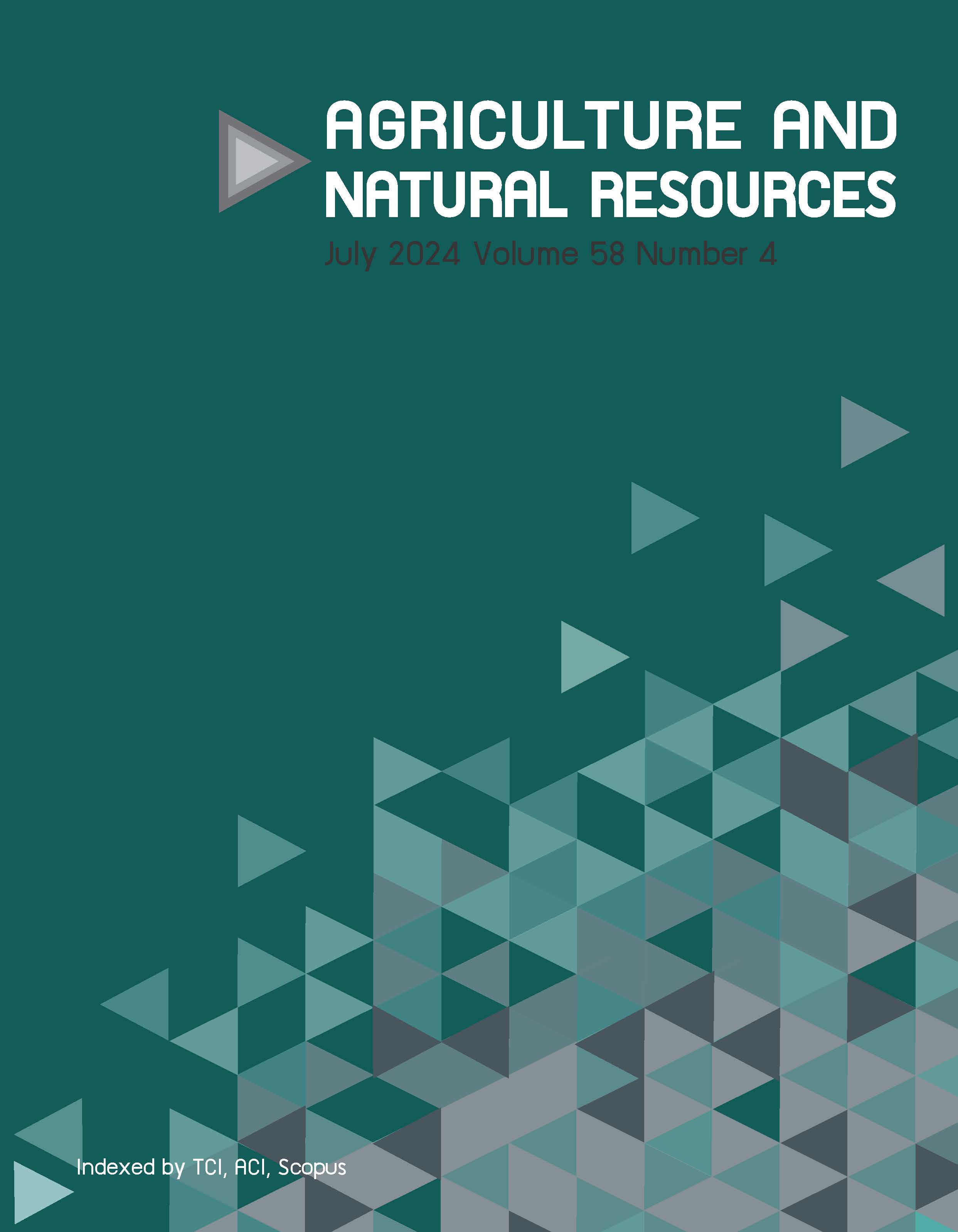Seasonal and management influences on yield of Melientha suavis Pierre in different alley agroforestry systems
Keywords:
Alley agroforestry systems, Environmental analysis, Management practices, Melientha suavis Pierre, Yield productivityAbstract
Importance of the work: There is a recognized need to enhance productivity in agroforestry systems through the utilization of Melientha suavis Pierre, a native Thai tree valued for its significant economic and conservation benefits.
Objectives: To analyze the impact of environmental factors and management practices on the yield of M. suavis leaves across different seasons and to create yield prediction models to support sustainable management strategies for agroforestry systems.
Materials & Methods: The study was conducted using four alley farming plots in Saraburi province, Thailand based on measurements of plant growth and environmental variables: canopy gap, leaf area index (LAI), soil moisture, soil temperature and electrical conductivity of pore water. Data were collected seasonally and analyzed using Pearson’s correlation coefficient and generalized linear mixed models, with Akaike information criterion (AIC) values utilized for model comparisons.
Results: Management practices and environmental conditions significantly influenced leaf yield, with distinct responses between dry and wet seasons. Canopy gap, LAI and soil moisture were particularly influential, with the lowest AIC value of 1509 indicating the best-fitting yield prediction model.
Main finding: LAI and soil moisture were critical in determining the seasonal yield of M. suavis leaves. Species selection and spatial arrangements in tree alley farming significantly affect productivity. The diameter over bark at ground level of M. suavis was the most influential factor regarding leaf yield, suggesting that management should focus on promoting radial growth to enhance yield efficiency and sustainability.
Downloads
Published
How to Cite
Issue
Section
License
Copyright (c) 2024 Kasetsart Universityonline 2452-316X print 2468-1458/Copyright © 2022. This is an open access article under the CC BY-NC-ND license (http://creativecommons.org/licenses/by-nc-nd/4.0/),
production and hosting by Kasetsart University of Research and Development Institute on behalf of Kasetsart University.







